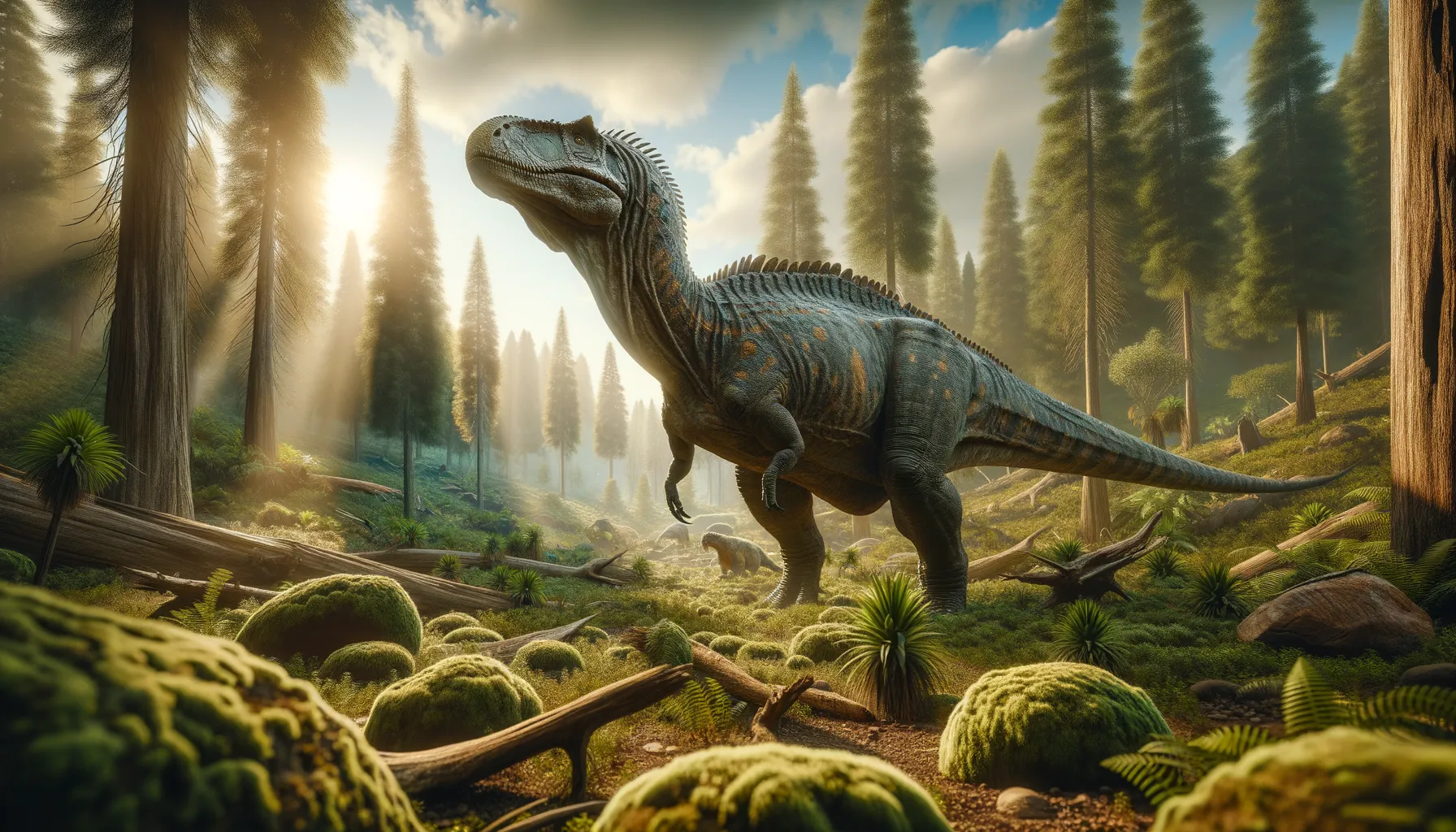
Dyoplosaurus
Armored giant of the late Cretaceous world.
Period
Cretaceous
Length
Roughly 5 meters long.
Height
Around 1.2 meters tall.
Weight
Approximately 1.5 tons.
Dyoplosaurus was an armored dinosaur known for its heavy, protective body and short build. It roamed the Earth during the late Cretaceous period, primarily in what is now North America. Its fossil remains indicate a creature well-adapted to defense, boasting a club-like tail and thick skin to fend off predators. This herbivore had a fairly low lifestyle, moving in search of food while avoiding becoming prey.
Diet
Dyoplosaurus was herbivorous, primarily feeding on low-lying plants, shrubs, and possibly small cycads that grew during its time. Its strong jaws were adapted to grinding tough vegetation, aiding its digestion process.
Hunting
While Dyoplosaurus did not hunt, its feeding behavior was largely dictated by the availability of vegetation. It likely moved in herds to graze safely and avoid carnivorous threats.
Environmental challenges
Dyoplosaurus faced threats from larger predators like the Tyrannosaurus rex, relying on its armor for protection. It also had to adapt to periodic environmental changes, such as shifts in climate and the availability of its plant food sources. Competition with other herbivores for these resources was likely a significant challenge.
Speed
Moved relatively slowly due to its heavy armor.
Lifespan
Estimated to live several decades.
First discovery
First discovered in Canada in 1924.
Fun Facts
- Dyoplosaurus means 'double armored lizard', named for its heavily armored body.
- It lived during the late Cretaceous period, around 76 million years ago.
- Dyoplosaurus was a plant-eater, or herbivore, munching on low-lying vegetation.
- Unlike some other armoured dinosaurs, Dyoplosaurus had a well-formed club at the end of its tail to defend against predators.
- Fossils of Dyoplosaurus have been primarily found in Alberta, Canada.
- It was a relatively short dinosaur, measuring about 4 to 5 meters in length.
- Dyoplosaurus was part of the ankylosaur family, known for their tank-like bodies.
Growth and Development
Dyoplosaurus grew from small hatchlings to large adults, relying on the protection of their armor as they developed. The growth of their characteristic tail club was key for defense, becoming more robust with age. Young Dyoplosaurus may have stayed with parents or older individuals to learn survival strategies.
Habitat
Dyoplosaurus lived in forested regions with abundant vegetation during the late Cretaceous. It thrived in environments where it could easily find food and water. Such habitats also provided cover from predators, which was crucial for its survival.
Interaction with other species
Dyoplosaurus coexisted with a variety of dinosaur species, including other herbivores and carnivores. It tended to avoid confrontations, relying on its defensive adaptations if necessary. Interactions with smaller species were likely minimal, as it competed more directly with other large herbivores for food.
Natural lifespan
Their natural lifespan was potentially several decades long.
Reproduction
Reproduction was likely similar to other ankylosaurs, involving the laying of eggs. Little direct evidence exists, but nesting sites were probably chosen for safety to protect eggs from predators. Parental care was minimal, though some protection might have been offered to hatchlings.
Social behaviour
Dyoplosaurus may have lived in groups as a strategy for safety and efficient foraging. Group living would have made it easier to spot predators and lower the risk of individual attack. Cooperation among individuals likely played a role in their daily survival, although each had highly individualistic behaviors when threatened.
Fossil locations
Fossils of Dyoplosaurus have been predominantly found in Alberta, Canada. These finds have contributed significantly to understanding Ankylosaurid dinosaurs. The discovery of these fossils helped to further distinguish Dyoplosaurus as a unique species within its group.
